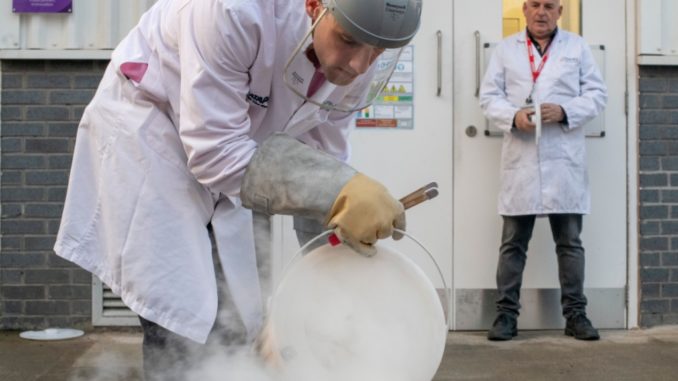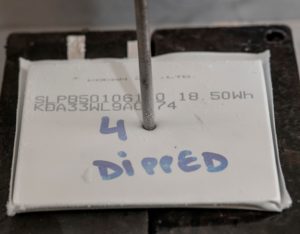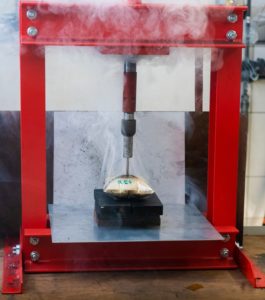
The ability to freeze batteries is appealing as they could be transported safely in a much cheaper and environmentally friendly way without being damaged.
Actually, damaged and defective lithium ion car batteries are hard to transport as legislation dictates they have to be placed within an explosion proof box which costs thousands of pounds to be transported.

Researchers from WMG at the University of Warwick in collaboration with Jaguar Land Rover engineers have been able to freeze lithium ion batteries with liquid nitrogen which would not require expensive explosion proof containers.
An explosion proof box to transport a typical Tesla sized battery costs €10,000 and a further €10,000 for the UN accreditation, however, the ability to transport them in plastic containers which cost a couple of hundred pounds has been made more accessible thanks to researchers from WMG at the University of Warwick.
In the paper, ‘Cycle life of lithium ion batteries after flash cryogenic freezing’ published in the Journal of Energy Storage, researchers highlight that cryogenic freezing does not reduce lithium ion battery’s energy capacity or affect cycle or service life, and could be transported in a safer way.
As the sales of electric vehicles increases, there is more concern for the transportation of damaged and defective lithium ion battery packs.

Explosion boxes are used to contain the battery in case it goes into thermal runway, an overheating condition which can lead to violent explosions and toxic gases being released. However being able to cryogenically flash freeze the batteries completely removes the risk of an explosion, and could therefore mean they can be transported safely in a plastic box.
Researchers who were part of the ELEVATE project funded by ESPRC, Catapult and supported by Jaguar Land Rover tested the batteries activity before they froze cells with liquid nitrogen and after, they also drove nails through the frozen cell to test the safety of them, and managed to show that their performance was not effected after freezing.
When being transported batteries will have to be kept in a lorry at -35 degrees, however the amount of packaging is significantly less than explosion proof boxes, making the process more sustainable.
Dr Thomas Grandjean from WMG, at the University of Warwick comments:
Transporting damaged and defective batteries is an expensive and unsustainable process, however being able to freeze them with liquid nitrogen could save thousands of pounds and help electric vehicle manufacturers be more sustainable.
We tested the batteries in the most extreme abuse conditions, such as driving nails through the cells and inducing external short circuits, proving that the freezing process is effective and safe.
Photo credits: WMG University of Warwick
Source: University of Warwick




Be the first to comment